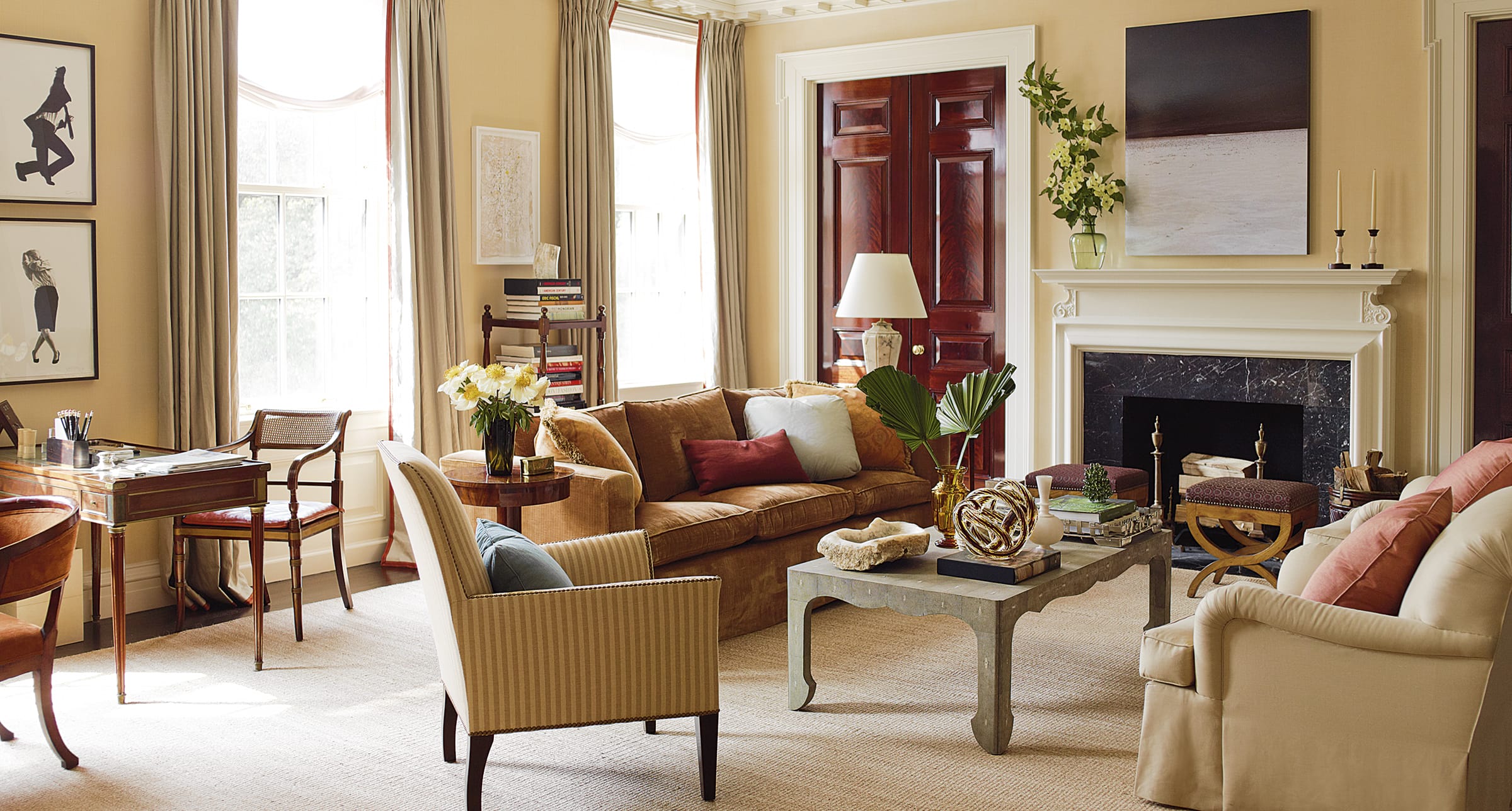Gil Schafer Infuses a Classic Manhattan Residence with Contemporary Art
The designer completely overhauls a Fifth Avenue apartment for a pair of longtime clients

Gil Schafer likes to call the couple with whom he has worked since he started his eponymous architectural practice his “patron” clients. “I’m not exactly sure what that means, but we like to call him family,” says the husband, who together with his wife works in Manhattan’s finance and real estate industries. Their very first project together, the renovation of a farmhouse in upstate New York nearly two decades ago, marked the beginning of more than 15 collaborations, the latest a classic Fifth Avenue apartment with sweeping views of Central Park.

The couple, parents to three school-age children, had been living in a SoHo loft filled with midcentury pieces and furniture custom made for the high-volume space. The wide-open plan was ideal for living with the enviable contemporary art collection the wife had been acquiring since her early 20s. “There wasn’t room for anything antique or traditional,” says Schafer. Conversely, the uptown apartment, with its proper rooms and classic architecture, was not a hospitable place for modern furnishings. But the art—by Robert Longo, Jason Martin, Polly Apfelbaum, and Ruth Root, to name a few—would have to become part of the interior design scheme.
For Schafer—whose second book, A Place to Call Home, will be released this fall by Rizzoli—striking a balance between the classic and the contemporary was a welcome challenge. “The most interesting clients are the ones whose taste is constantly evolving,” he says. “I think as we grow older we are happy to let a little tradition back into our lives. There’s a sophistication that comes with adding antiques and sofas that are actually comfortable to an interior.” Not that his clients were looking for formality; they wanted to keep the youthful spirit epitomized by their art collection and make the space function equally well for family meals and elegant dinners.

To that end, Schafer attended first to the bones of the 4,000-square-foot space. “I wanted the architecture to be appropriate to the setting,” he says. “After all, the Metropolitan Museum of Art is right across the street.” With only the living room mantelpiece remaining from the original apartment, the architect set out to preserve the soul of the space while making accommodations for modern family living. Colonial Revival moldings announce themselves just enough without putting up a fight with the contemporary art for which they became a backdrop. Enlarged openings between the library, living room, and dining room provide the right degree of informality and the kind of casual flow that make for relaxed parties. Such quiet architectural moves are rarely obvious to mere mortals, which was the point.

The same cannot be said of the apartment’s entrance, where Schafer set out to produce an indelible experience every single time his clients and their guests step off the elevator. Indeed, he dispensed with the vestibule between the lift and the apartment door altogether and instead had the elevator open directly into the foyer, where handsome columns punctuate its four corners and frame the view to the street beyond. A monumental painted-aluminum work by Jason Martin deftly interrupts an orderly paneled wall and dips below the chair rail to boot. “I love the tension that’s created by a contemporary painting overshooting classical architecture. It refuses to be imposed upon,” says Schafer.

Such energizing combinations run throughout the four-bedroom apartment. “My clients were so game when it came to placing their art,” Schafer explains. “I did it almost entirely by intuition and referred to scale, balance, and color as a guide.” In the dining room, cloaked in glossy Rioja red in homage to the oenophile husband’s passion for Spanish language and culture, Schafer hung one of Graham Gillmore’s playful word paintings. A fantastical oil by Walton Ford, from his series of extinct animals, is displayed in the library, which is paneled in cerused oak. “It is the painting I feel most lucky to own and deeply enjoy turning the corner to see it,” says the wife. Elsewhere, works by Elliott Puckette, Liam Everett, John Currin, Elizabeth Peyton, and Carroll Dunham happily co-exist in an apartment that Schafer likes to think will stand the test of time. “Part of Gil’s genius is his ability to combine sophistication and functionality beautifully,” the husband says.

The architect’s flair for displaying their art—not to mention routinely interpreting their desires—will likely keep him in the family for years to come. The wife has begun to share her passion for art, bringing her children along on studio visits: “I now gravitate to artists such as James Capper, whose work the kids have seen in his studio. Eventually, the collection will become theirs, so the more they engage with the work, the more connected they will be to it.”
